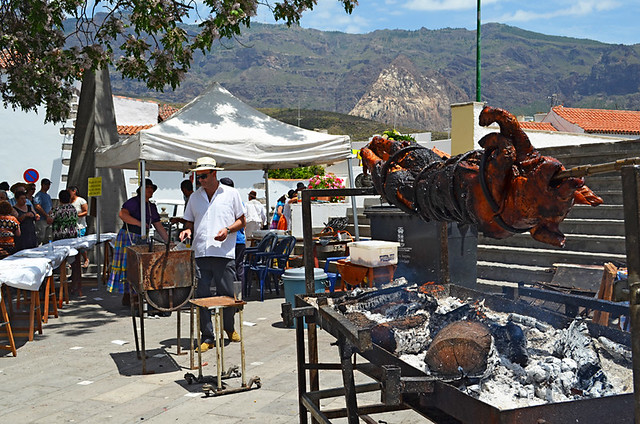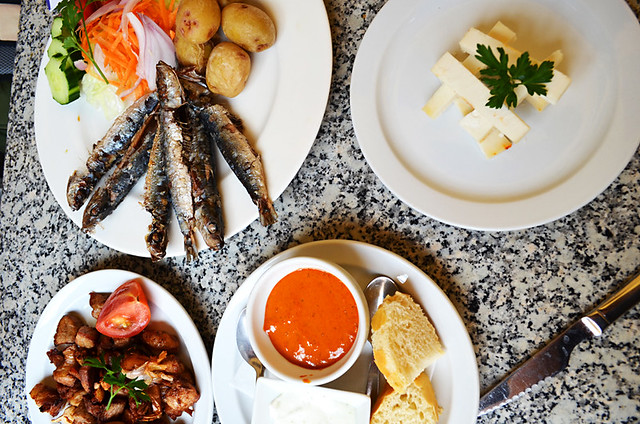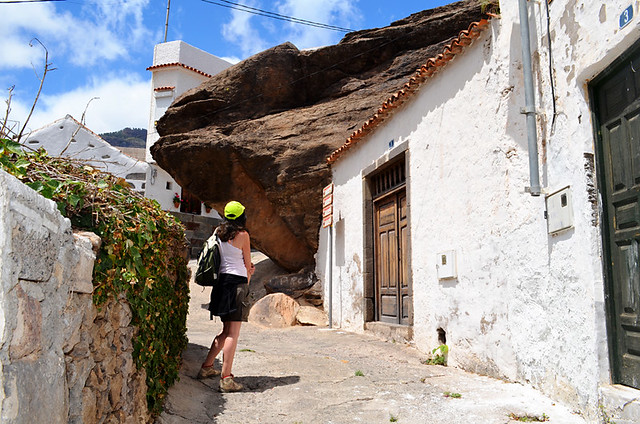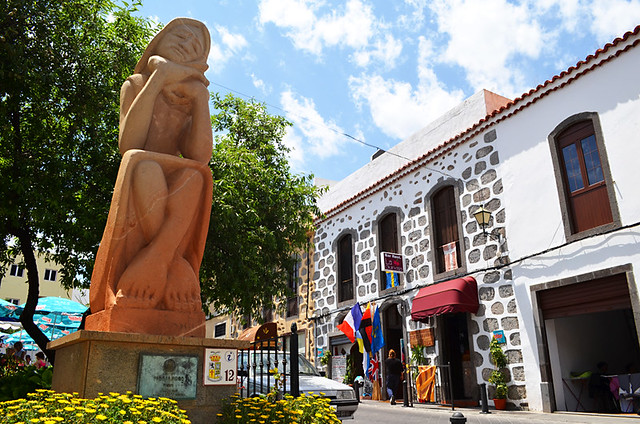Alarm bells immediately go off in my head when a taxi driver puts on a blank stare and grunts ‘Uh?’ as the one who picked us up from the airport at Gran Canaria did when we asked for the town of San Bartolomé de Tirajana. The alarm bells sounded even louder knowing that San Bartolomé de Tirajana is the biggest municipality on Gran Canaria.
Are you telling me a veteran taxi driver doesn’t know where it is?
It’s possible. For a couple of reasons.
The first is that it’s unlikely that he has to ferry people from the airport to the town of San Bartolomé. Most passengers probably head to the municipality’s resort area – Maspalomas.
The second is the town seems to have a split personality. On our map it was classed as San Bartolomé de Tirajana. But when the taxi driver dropped us off there (he didn’t overcharge BTW), we found that on the ground it was known more commonly as Tunte; an older name taken from the island’s aborigine Canariis.
Confused, we dumped our bags at the Hotel Rural Las Tirajanas and, finding our breaths again after they were stolen by possibly the best hotel views we’ve witnessed, headed down the old street linking the hotel with the centre of Tunte for an explore.
Roasting Pigs and Salty Sardines
Don’t you just love it when you arrive somewhere and there’s a fiesta going on? It feels as though the town’s thrown a street party to welcome you. Stalls selling huge spring onions, oversized sweet potatoes, cheeses and bottles of wine lined the little square whilst a local folk group serenaded the local ‘browsers’. It had an atmosphere that was instantly infectious. Within seconds we knew we were going to enjoy spending a couple of days in Tunte… or whatever the place was called.
Wonderful though the small fair was, a seductive aroma emanating from a shady spot at the back of the plaza distracted us away from the stalls (stop now if you’re a vegetarian or don’t like your meat to look like animals).
At the rear of the plaza, a whole pig was crisping nicely on a rotating spit; the ears looked particularly good. As the porker wasn’t quite cooked to perfection, and the aroma had made us ravenous, we sought an inviting tasca for a spot of lunch.
The courtyard of La Hacienda del Molino, a rural hotel, restaurant and ethnographic centre for Canary Island traditions, looked like an attractive setting to enjoy a selection of local dishes. Tapas in the Canary Islands isn’t always like tapas in parts of mainland Spain. They come in quite large portions as a ración or, a bit smaller, media ración and sometimes fall under the menu heading ‘Picoteo’. Under the blank gaze of ‘Pancho’ (a Tunte hero – you’ll have to visit La Haciendo to see what I mean) we ordered sardinas a la plancha (grilled sardines), queso duro (hard local cheese) and carne frita (fried, spicy pork) with mojo rojo (slightly spicy red salsa) and alioli (garlic mayonnaise). With bread and a couple of beers it completely sated the hunger caused by the unfortunate pig. The bill came in around €20 .
Rocky Houses and Mysterious Idols
Post lunch we decided to explore the town further. A question about directions in a tiny, dark shop (Tunte’s version of the local supermarket) led to the owner wandering across the street for a confab with another shop owner – which clearly turned into a bit of a gossip as she never returned to her own shop, motioning for us to leave what we owed her on the shop counter. The confab resulted in a man being roused from his position outside of tasca to escort us back to the fair to be introduced to another man who seemed to be the font of all local knowledge. It wasn’t the last time we’d be impressed by the generous nature of the people on Gran Canaria.
Armed with all sorts of information we braved the searing afternoon heat to seek out the town’s hot spots. For a small place Tunte has bags of interesting and curious corners; secret alleys with cobblestones and rusty old plant plots filled with leggy geraniums, a rock protruding out of a house, a dreamy tribute to hard-working local women and a figure that may or may not have been a deity. All enclosed in an aesthetically pleasing wrapping of narrow streets and traditional Canarian architecture.
Although we were there mainly to explore walking routes around the surrounding countryside, Tunte’s charm and quirky little attractions had been an unexpected bonus.
Incidentally La Panera de Tunte, opposite the church, is a bustling little café/bakers which has been a good place to pick up pastries and bocadillos since 1848.









Ahhhh – it takes me back. I´ve spent a lot of time in San Bartolome/Tunte, and I have to say, you´ve done it proud! So glad you obviously liked it there…..it´s one of those places that is mostly unvisited by the hordes – thankfully!
We are off to Grab Canaria for 1st visit, staying in Teror. Looking to find some good circular walks in the are or around Tunte
There are definitely circular routes from Tunte. We walked three routes from there (only one circular). The Tourist Board have a series of leaflets with suggestions for walking routes of various lengths all over Gran Canaria. Routes are generally well signposted. We thought there were some excellent walks on the island.